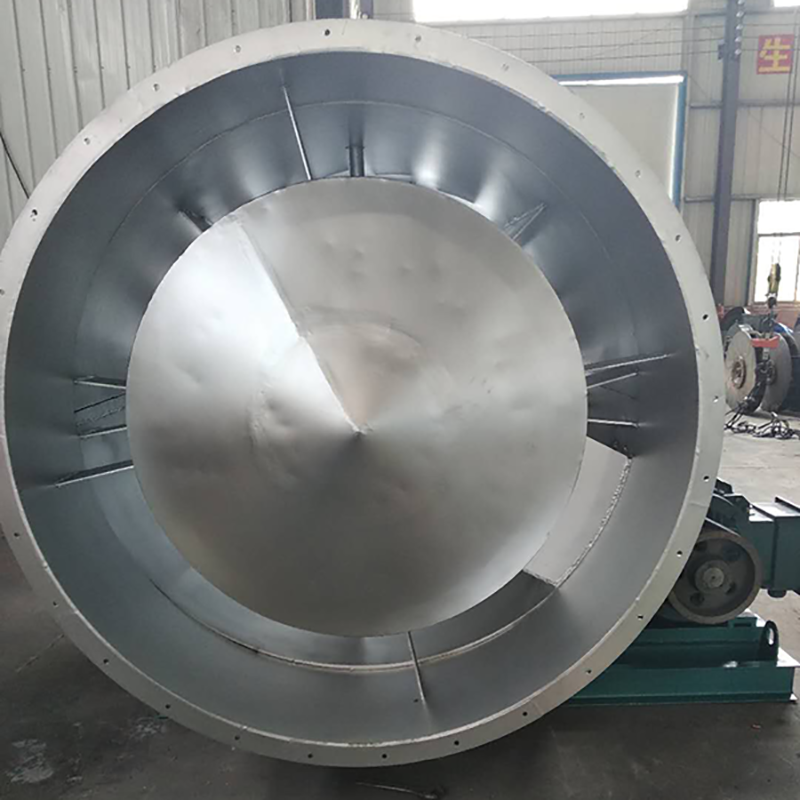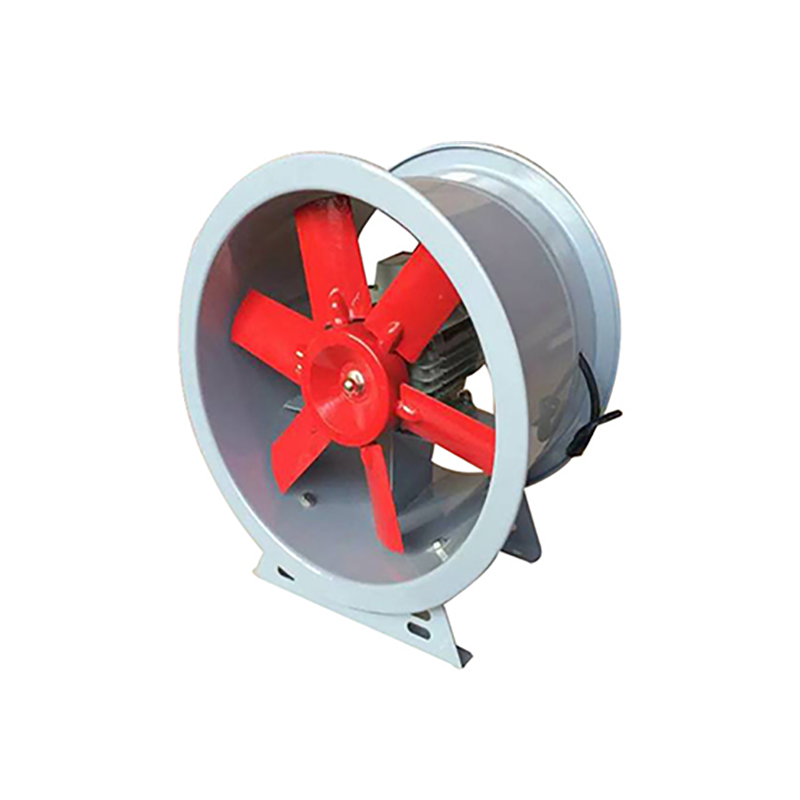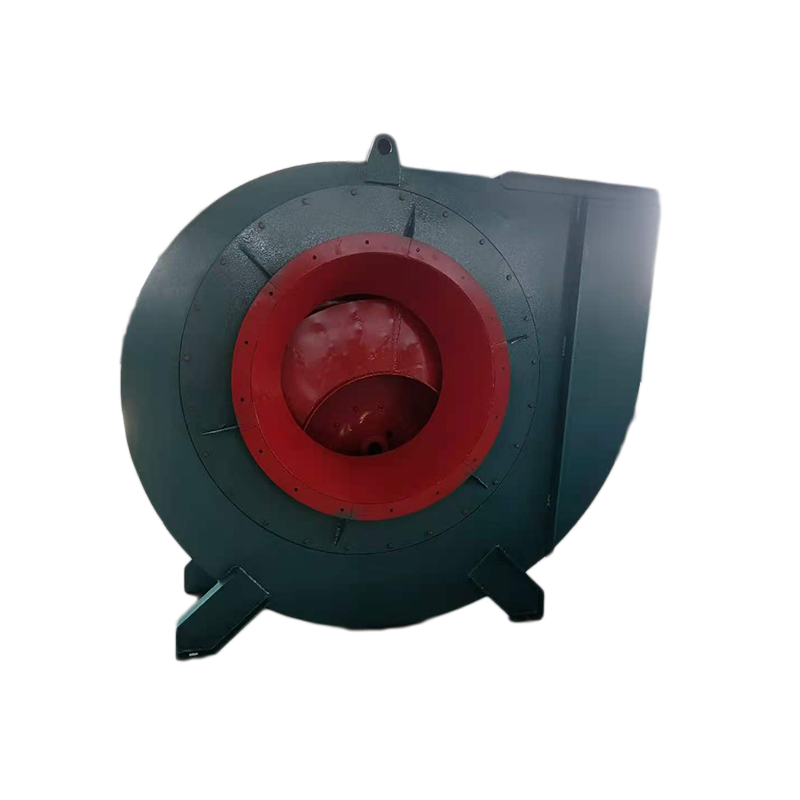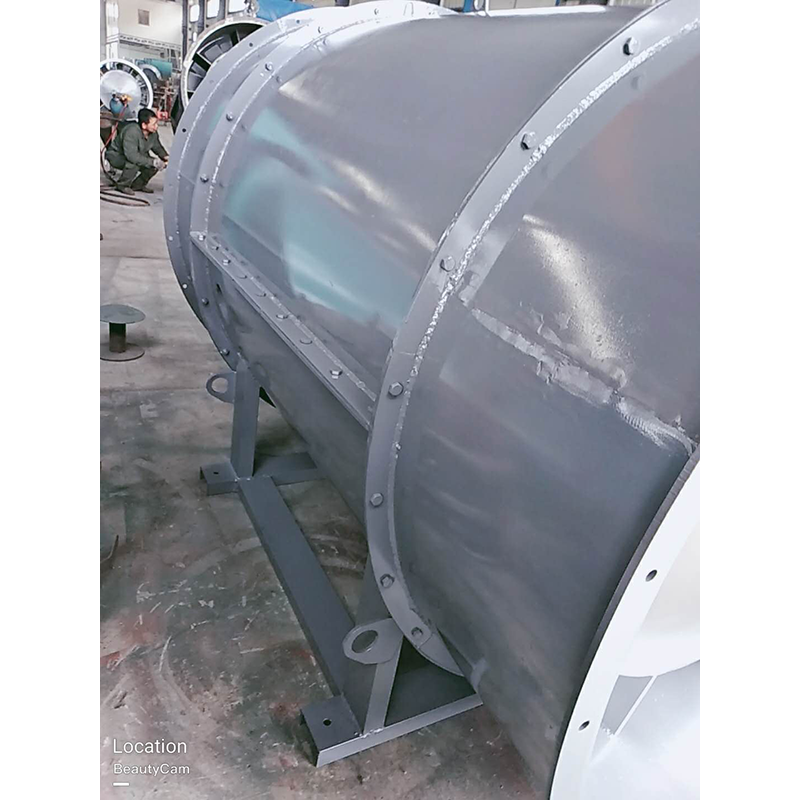
The fan is allowed to start at full voltage or at reduced voltage, but it should be noted that the current at full voltage starting is about 5~7 times the rated current, and the reduced voltage starting torque is proportional to the square of the current. When the grid capacity is insufficient, the reduced voltage starting should be used. (When the power is greater than 11KW, it is advisable to adopt the step-down starting.) When the fan is in test run, Axial flow fan manufactor Carefully read the product manual and check whether the wiring method is consistent with the wiring diagram; Carefully check whether the working voltage of the power supply to the fan meets the requirements, whether the power supply is out of phase or in phase, and whether the capacity of the electrical components provided meets the requirements. During commissioning, the number of people shall not be less than two. One person shall control the power supply and the other person shall observe the operation of the fan. If any abnormality is found, stop the machine immediately for inspection; First, check whether the rotation direction is correct; After the fan starts to run, immediately check whether the running current is balanced and whether the current exceeds the rated current; large Axial flow fan If there is no normal phenomenon, stop the machine for inspection. After five minutes of operation, stop the machine to check whether the fan is abnormal, and start the machine again after confirming that there is no abnormal phenomenon. When the two speed fan is tested, start the low speed fan first and check whether the rotation direction is correct; When starting the high-speed train, the fan must be stopped before starting to prevent the switch tripping and motor damage caused by high-speed reverse rotation. When the fan reaches the normal speed, check whether the input current of the fan is normal, and the operating current of the fan cannot exceed its rated current. If the operating current exceeds its rated current, check whether the voltage supplied to the fan is normal. The motor power required by the fan refers to the higher power required for centrifugal fan and fan box when the air inlet is fully open under certain working conditions. If the air inlet is fully opened for operation, the motor may be damaged. During fan commissioning, it is better to close the valve on the inlet or outlet pipeline of the fan, open the valve gradually after operation until the required working condition is reached, and pay attention to whether the operating current of the fan exceeds the rated current

Wet dust remover is an equipment that uses the action of water or other liquids and dusty gas to remove dust particles. When dust particles meet with sprayed water droplets, water films or wetted walls and devices, wetting, condensation, diffusion and sedimentation will occur, thus separating them from the gas to purify the gas. Anqing Axial flow fan manufactor It is characterized by both dust purification and gas purification, large Axial flow fan When the flue gas contains combustible components, the use of wet dust collectors can avoid equipment explosion, and the dust removal effect can generally meet the environmental protection requirements. The equipment is small and the investment is relatively low. Therefore, there are three wet dust collectors used in dust removal projects in mining, metallurgy, machinery, light industry, building materials and other industries. Sludge containing sewage must be treated, otherwise secondary pollution may occur, Therefore, it is not widely used as dry dust collector. There are many types of wet dust collectors. According to their structures, there are the following types: ① gravity spray wet dust collectors - spray scrubbing towers; ② Cyclone wet dust collector - cyclone water film dust collector, water film dust collector; ③ Self excited wet dust collector - impulse dust collector, water bath dust collector; ④ Packed wet dust collector - packed tower, turbulent ball tower; ⑤ Foam wet dust collector - foam dust collector, cyclone dust collector, leaky plate tower; ⑥ Venturi wet dust collector - Venturi tube dust collector; ⑦ Mechanical induction wet dust collector - water wheel dust collector.

How are dust collectors classified, large Axial flow fan Do you know how to distinguish it and how to define its economic type? Let's talk about it from these aspects. 1. Dust removal efficiency. Anqing Axial flow fan Dust removal efficiency refers to the ratio of the amount of dust collected by the dust collector to the amount of dust entering the dust collector. According to the total dedusting efficiency, the dedusters can be divided into: low efficiency dedusters (50~80%), medium efficiency dedusters (80~95%) and high efficiency dedusters (more than 95%). 2. Dust removal resistance. The resistance indicates the pressure loss when the airflow passes through the dust remover. According to the resistance, dust collectors can be divided into low resistance dust collectors (Δ P<500Pa), medium resistance dust collectors (Δ P=500 ~ 2000Pa) and high resistance dust collectors (Δ P=2000 ~ 20000Pa). 3. Economy. Economy is one of the important indexes for evaluating dust remover, which includes equipment cost and operation and maintenance cost of dust remover. Among all kinds of dust collectors, the equipment cost of electrostatic precipitator is the highest, followed by bag type dust collector, Venturi tube dust collector, cyclone dust collector is the lowest electrostatic precipitator: the dust removal efficiency is high, generally above 99%, and the design efficiency is up to 99.99%. The wet dust collector is commonly known as "water dust collector" : The filtration efficiency can reach more than 85%, and the integrated desulfurization and dust remover of stone water film+swirl plate>>about 80% of desulfurization and dust removal can reach as high as about 95%.

The key points of factors to be considered in the technical approach to the transformation of wet electrostatic precipitators: the wet electrostatic precipitators built before the mid-1970s could not meet the requirements of the new emission standards because of the low requirements for boiler smoke and dust emissions, the small selection of equipment capacity, the outdated structure of electrostatic precipitators, aging of dust removal equipment, low dust removal efficiency and other reasons, These electrostatic precipitators have a problem of transformation to further improve efficiency. large Axial flow fan manufactor The improvement measures for the original equipment should be considered from both technical and economic aspects, and the following technical approaches are generally adopted: 1. Discover the potential of electrostatic precipitator equipment. For example, adjust the rapping cycle and rapping force of the electrode to improve the corona power and reduce the re flying of dust; Improve the uneven distribution of flue gas velocity and readjust the technical parameters of the airflow distribution device; Adjust the control mode or power supply mode of the power supply equipment. 2、 large Axial flow fan Combination with other dedusting equipment. That is, a primary precipitator is added before or after the electrostatic precipitator. 3. Increase the capacity (or dust collection area) of the electrostatic precipitator. That is, add an electric field, or increase or widen the electric field of the electrostatic precipitator.




